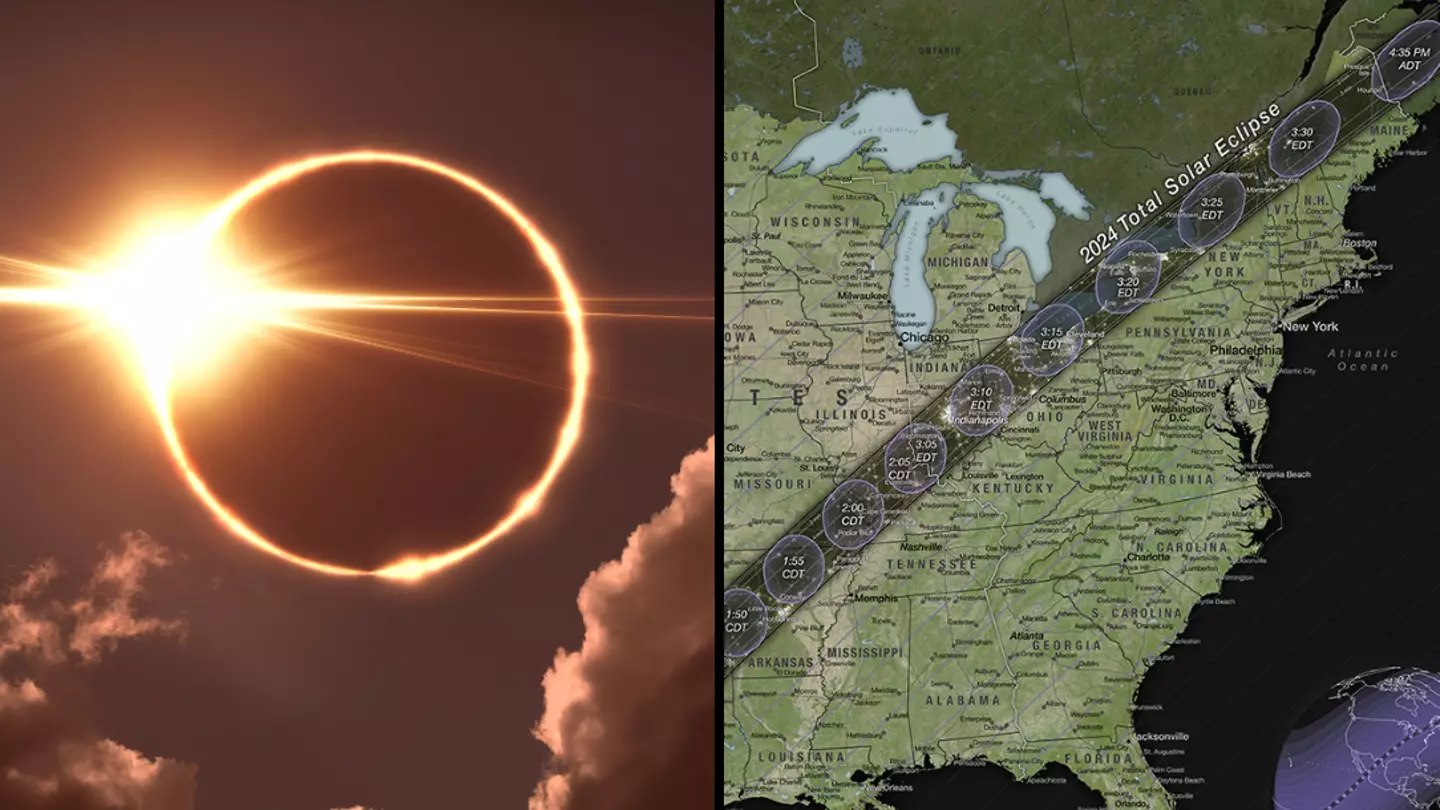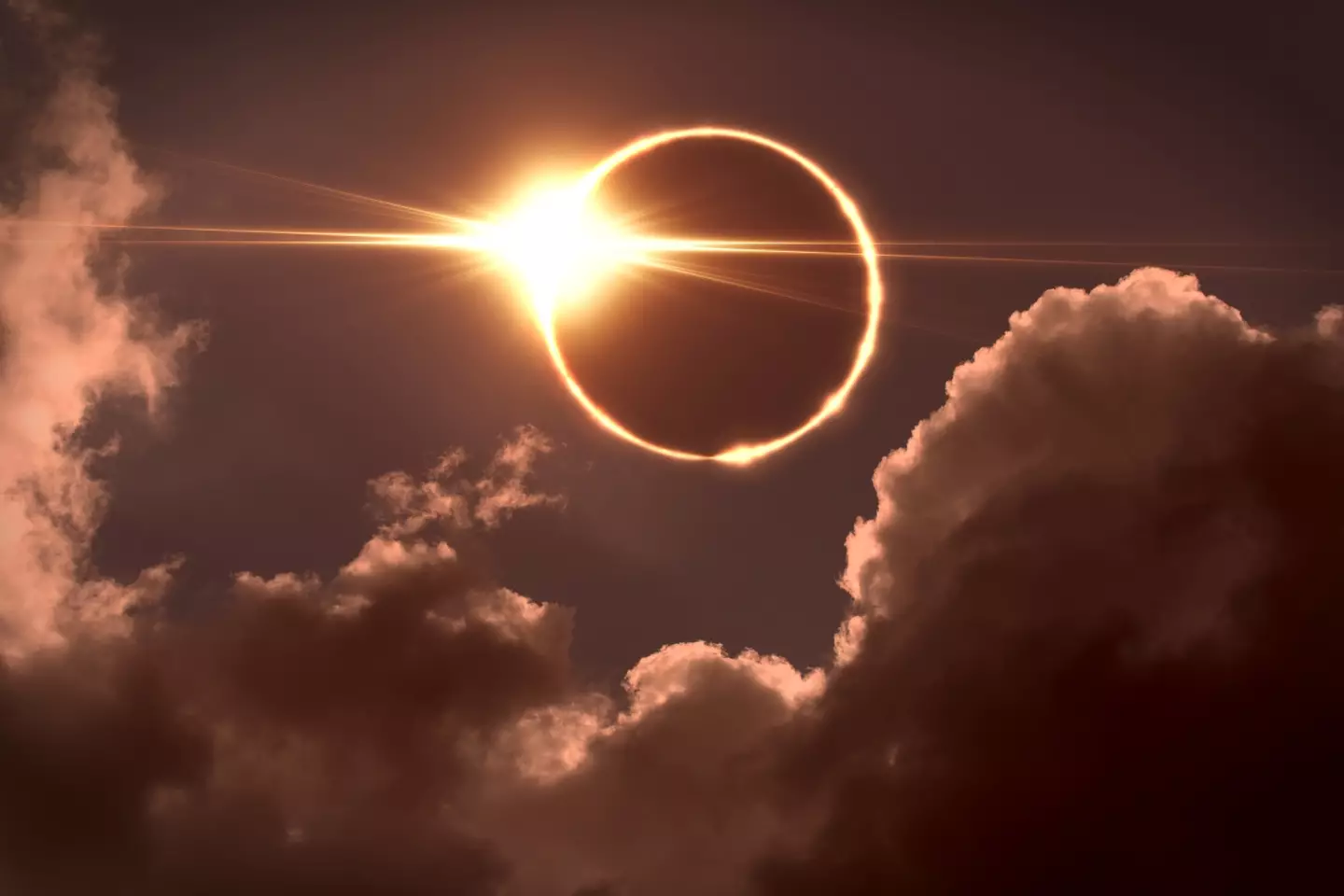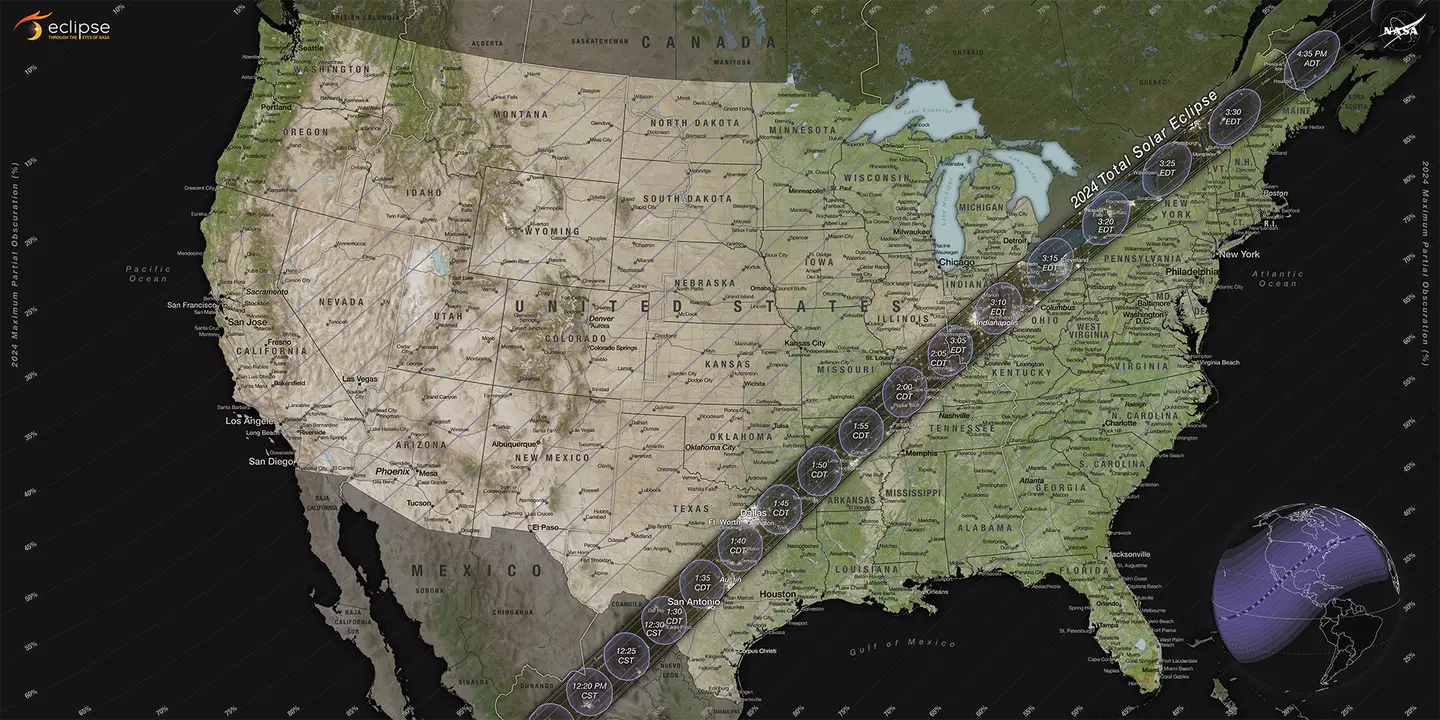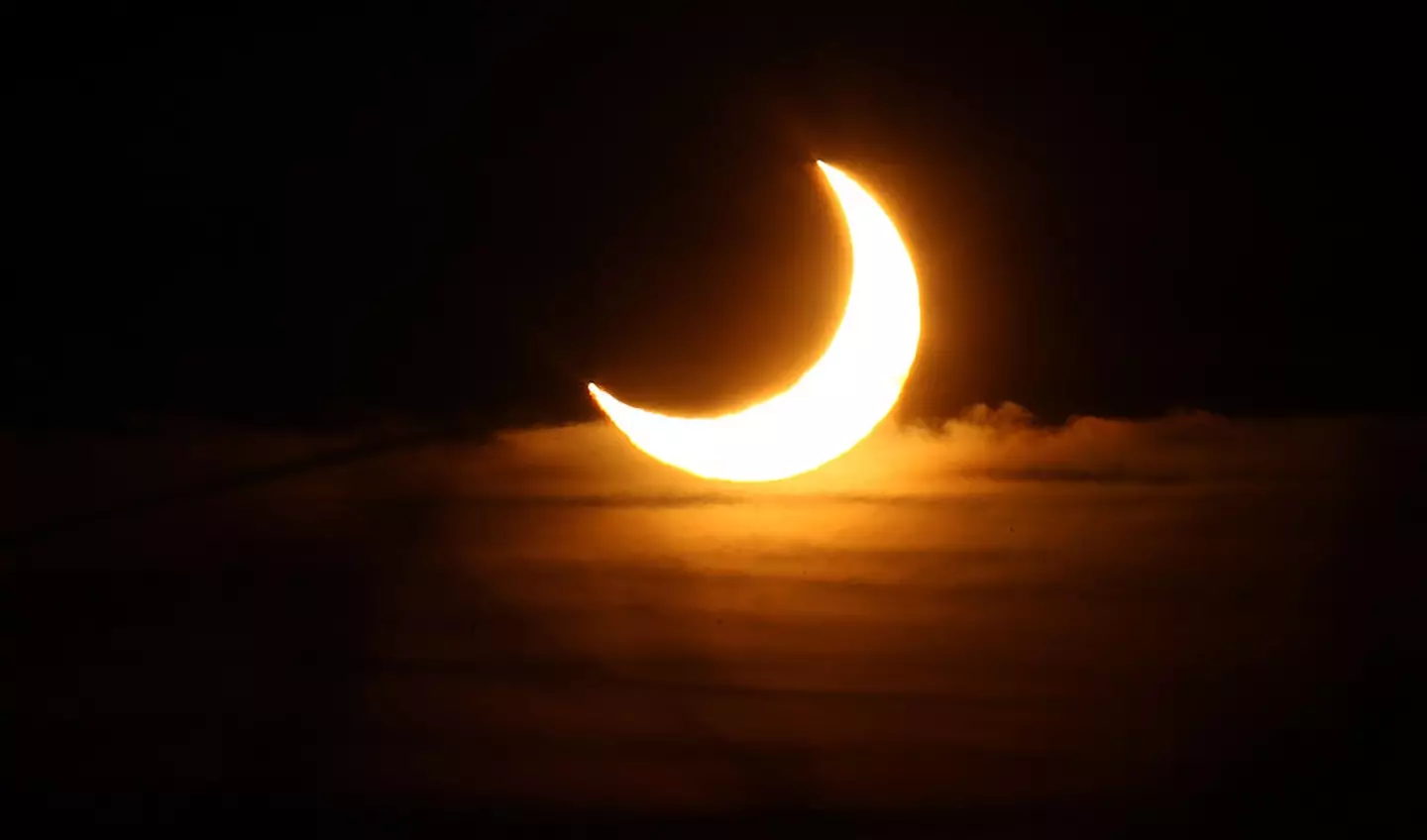
Hundreds of millions will be looking up to the heavens as the rare phenomenon of a solar eclipse takes over the skies of an entire continent. And space scientists are here to tell you exactly when and where to look up.
A solar eclipse happens when the movement of the Sun and the Moon line up directly, with the Moon blocking light from the Sun from reaching Earth.
And this month, a total solar eclipse is set to take place. This is where the entire Sun is blocked by the Moon.
For most living in North America, they will experience either a total or partial solar eclipse just next week. And it comes with a 'very serious' warning for those looking up.
Happening on Monday (8 April), millions will be able to witness it under what is called the 'path of totality'.
Advert
In the United States, this will pass from Maine in the north east to Texas in the south.
It'll pass over Oklahoma, Arkansas, Missouri, Illinois, Kentucky, Indiana, Ohio, Pennsylvania, New York, Vermont, New Hampshire, and Maine
It'll also hit Canada's very eastern edges, mainly New Brunswick and Nova Scotia.

And in Mexico, the total eclipse will be visible over the states of Coahuila and Durango. It's in Mexico that lights will be out for the longest, where the totality will last for four minutes and 28 seconds.
Advert
The eclipse will travel from the south west of the map in a north westerly direction across the countries. Most places on its trajectory will be put in to darkness for between 3.5 and four minutes.
A map of the event has been released by NASA showing the path of totality in all its glory to help those that live in its path.

The total solar eclipse will start on Mexico's Pacific coast at 11.07am PDT before leaving North America at Newfoundland, Canada, at 5.16pm NDT.
According to NASA, the following cities in the United States will be under total eclipse at the following times:
- Dallas, Texas: 1.40pm CDT
- Idabel, Oklahoma: 1.45pm CDT
- Little Rock, Arkansas: 1.51pm CDT
- Poplar Bluff, Missouri: 1.45pm CDT
- Paducah, Kentucky: 2pm CDT
- Carbondale, Illinois: 1.59pm CDT
- Evansville, Indiana: 2.02pm CDT
- Cleveland, Ohio: 3.13pm EDT
- Erie, Pennsylvania: 3.16pm EDT
- Buffalo, Yew York: 3.18pm EDT
- Burlington, Vermont: 3.26pm EDT
- Lancaster, New Hampshire: 3.27pm EDT
- Caribou, Maine: 3.32pm EDT
For those who aren't in the direct path of the total eclipse, fear not. NASA is also hosting live coverage of the event.
Advert
Starting at 1pm EDT on the NASA website, the space agency's coverage will also include NASA experts, astronauts aboard the space station, an inside look at NASA’s eclipse science experiments and watch parties across the country.

It'll be three hours long and feature live footage from locations across the country including NASA's Glenn Research Center in Ohio; Carbondale, Illinois; Dallas; Houlton, Maine; Indianapolis; Kerrville, Texas; Niagara Falls, New York; and Russellville, Arkansas.
NASA also will host a watch party of the eclipse in Spanish starting at 1.30pm on YouTube.
If you're watching it in person, just don't look directly at the Sun. Doing this can cause permanent damage to the eyes.
Advert
It could end up being hours before you realise the full extent of the damage you've done to yourself.